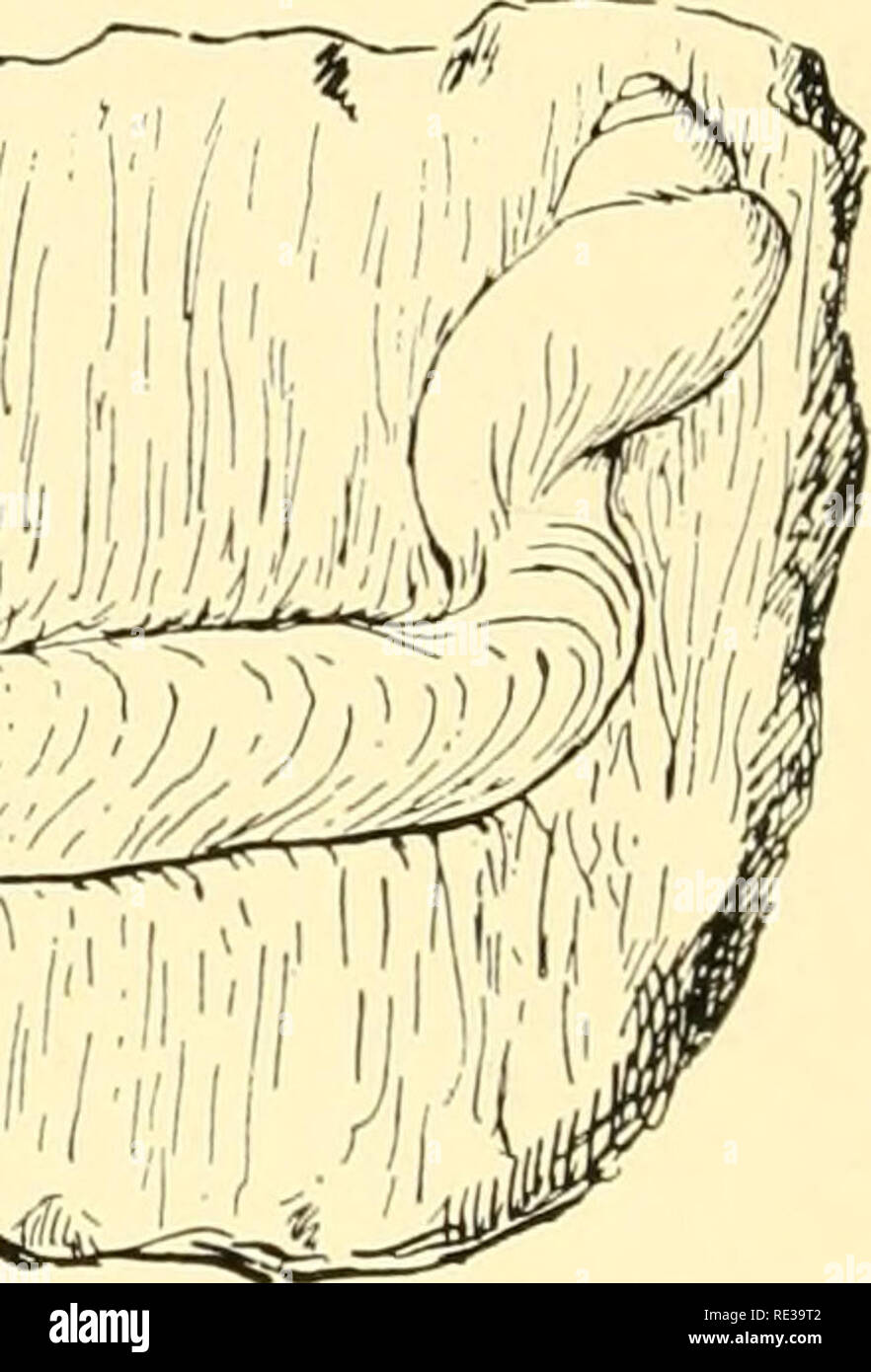. Ecological animal geography; an authorized, rewritten edition based on Tiergeographie auf ockologischer grundlage. Zoogeography -- Geographical distribution; Animal ecology. Fig. 15.—Magilus antiquus with the coral limestone cuti away to show the shell, which is filled with calcium carbonate to the dotted line. and have few representatives in polar waters. Animals which deposit large amounts of lime are also absent in deep seas; serpulids, for example, are wanting, and the deep-sea sea urchins are forms with a soft shell (Echinothuridae). This constitutes an important factor in the distribut

Image details
Contributor:
The Book Worm / Alamy Stock PhotoImage ID:
RE39T2File size:
7.1 MB (247.4 KB Compressed download)Releases:
Model - no | Property - noDo I need a release?Dimensions:
1302 x 1918 px | 22 x 32.5 cm | 8.7 x 12.8 inches | 150dpiMore information:
This image is a public domain image, which means either that copyright has expired in the image or the copyright holder has waived their copyright. Alamy charges you a fee for access to the high resolution copy of the image.
This image could have imperfections as it’s either historical or reportage.
. Ecological animal geography; an authorized, rewritten edition based on Tiergeographie auf ockologischer grundlage. Zoogeography -- Geographical distribution; Animal ecology. Fig. 15.—Magilus antiquus with the coral limestone cuti away to show the shell, which is filled with calcium carbonate to the dotted line. and have few representatives in polar waters. Animals which deposit large amounts of lime are also absent in deep seas; serpulids, for example, are wanting, and the deep-sea sea urchins are forms with a soft shell (Echinothuridae). This constitutes an important factor in the distribution of marine animals.6 Murray7 has pointed out that the calcium which is brought into the ocean by the rivers, and which comes from the decomposition of the continental rocks, is thus deposited more and more in the tropics at the present time. The presence of the inorganic substances of primary importance to plant life, especially those which are not present in excess, such as carbon dioxide, phosphoric acid, and the nitrogen compounds, deter- mines the quantitative distribution of plant life in the sea, and thus secondarily influences the distribution of animal life. Sea water contains 40 to 50 mg. carbon dioxide per liter, of which only a few tenths of a cubic centimeter per liter is present in simple solution;8 it is combined as carbonate or bicarbonate, on account of the excess of basic compounds. Experiments have made it certain that plants are able to use the carbon dioxide contained in bicarbonates.. Please note that these images are extracted from scanned page images that may have been digitally enhanced for readability - coloration and appearance of these illustrations may not perfectly resemble the original work.. Hesse, Richard, 1868-1944; Allee, W. C. (Warder Clyde), 1885-1955; Schmidt, Karl Patterson, 1890-1957. New York : J. Wiley & Sons, Inc. ; London : Chapman & Hall, Limited